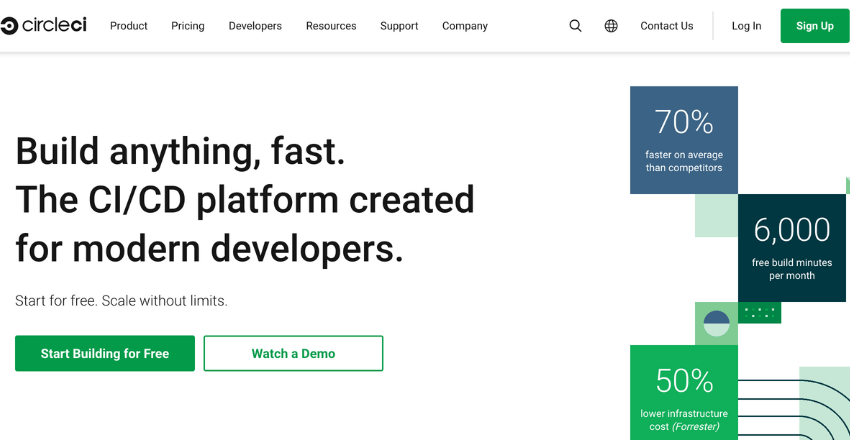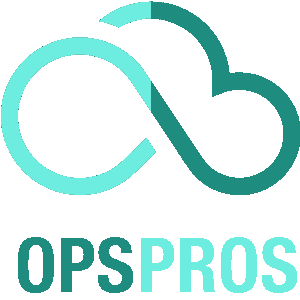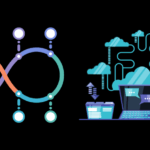
CircleCI takes Continuous Integration and Continuous Deployment to the next level. Optimize your workflow for peak performance and reliability.
If you’re looking to optimize your CI/CD processes, CircleCI might just be the solution you need. With seamless integration, enhanced code quality, and increased development speed, CircleCI can help your team deliver high-quality software faster than ever.
CircleCI is a cloud-based platform that automates the software development process, from testing to deployment, allowing developers to concentrate on coding without worrying about infrastructure or deployment issues. It provides a unified platform that enables continuous integration and continuous delivery of software products, resulting in fast, high-quality code releases and deployments.
Key Takeaways
- CircleCI can enhance code quality and increase development speed through seamless integration.
- CircleCI automates the software development process, allowing developers to focus on coding.
- CircleCI enables continuous integration and continuous delivery to ensure fast and high-quality code releases and deployments.
The Role of CircleCI in DevOps
DevOps is a methodology that emphasizes communication, collaboration, and automation between developers and IT operations. Continuous integration and deployment (CI/CD) are key components of DevOps, which ensure that code is tested, integrated, and delivered to production frequently and reliably.
CircleCI is a powerful tool that enables teams to automate their CI/CD pipelines easily. It helps to integrate code changes seamlessly, allowing teams to focus on building and delivering quality software quickly. With it, teams can build, test, and deploy their applications with confidence, knowing that they have an efficient and reliable CI/CD process in place.
Continuous Integration with CircleCI
Continuous integration is the practice of regularly merging code changes from multiple developers into a shared repository. CircleCI automates this process by building and testing each code change in an isolated environment, so teams can catch and fix issues quickly before they merge into the main codebase. With it, teams can ensure that their code is always in a releasable state, reducing the risk of introducing bugs and other issues further down the pipeline.
By enabling teams to integrate code changes frequently, CircleCI helps to reduce the time it takes to deliver new features and functionality to users. This is critical in today’s fast-paced development environment, where customers expect frequent updates and improvements to their apps.
Getting Started with CircleCI
If you’re looking to get started with CircleCI, the first step is to create a CircleCI account and link it to your code repository. Once you’ve done that, you’ll need to set up your first pipeline.
To create a pipeline in CircleCI, you’ll need to create a configuration file in your code repository. This file, called .circleci/config.yml, specifies the steps that CircleCI should take to build, test, and deploy your code.
Here’s an example of a simple CircleCI pipeline configuration:
| version | jobs | workflows |
|---|---|---|
| 2.1 | build: | main: |
| docker: | jobs: | |
| – build | – build |
This simple configuration defines one job, which uses a Docker container to build your code. When you push code to your repository, CircleCI will automatically run this job and report the results.
Of course, this is just the beginning. Depending on your project’s needs, you can define multiple jobs, workflows, and more complex configuration options in your CircleCI pipeline.
Fortunately, it provides extensive documentation and support resources to help you along the way. Whether you’re new to CI/CD or an experienced developer, it makes it easy to get up and running quickly.
Enhancing Code Quality with CircleCI
It is a powerful tool for enhancing code quality through automated testing, code analysis, and best practice enforcement. By integrating CircleCI into your CI/CD pipeline, you can automate these processes and catch potential issues early on in the development cycle.
One key feature of CircleCI is its ability to run automated tests on every code change, ensuring that new code does not introduce bugs into the system. CircleCI integrates with popular testing frameworks such as JUnit, pytest, and mocha, making it easy to set up and run tests.
In addition to testing, it also supports code analysis tools such as SonarQube and Code Climate, which can identify code smells, security vulnerabilities, and other potential issues. By catching these issues early on, you can avoid costly rework and ensure that your codebase remains maintainable in the long term.
It also supports best practice enforcement through integration with tools such as ESLint, RuboCop, and Checkstyle. By enforcing coding standards and style guidelines, you can ensure that your codebase remains consistent and easy to read, even as it grows and evolves over time.
Overall, CircleCI provides a powerful set of tools for enhancing code quality and ensuring that your codebase remains maintainable over the long term. By automating testing, analysis, and best practice enforcement, you can catch potential issues early and avoid costly rework down the line.
Boosting Development Speed with CircleCI
CircleCI is an essential tool for developers looking to accelerate their development speed. By automating their continuous integration and deployment pipelines, teams can expect faster feedback loops and more efficient workflows.
One of the key features of CircleCI is its ability to parallelize builds, which can significantly reduce build times. By breaking down the build into smaller, concurrent tasks, CircleCI can optimize resource usage and speed up the build process. Additionally, CircleCI’s ability to containerize builds means that the environment can be configured to closely mimic production, reducing the likelihood of issues arising during deployment.
Another way CircleCI boosts development speed is by enabling fast feedback loops. This is achieved through automated testing, which ensures that code changes do not introduce regressions or other issues. With CircleCI, teams can configure their testing suite to automatically run on every code commit, providing near-instant feedback on whether their changes have introduced any issues.
CircleCI also provides a range of caching options, which can further optimize build times. By caching dependencies and build artifacts, CircleCI can reduce the amount of time required for subsequent builds, leading to faster overall development speed.
To maximize the benefits of CircleCI for development speed, it is important to configure the pipeline to suit the needs of the project. This may involve configuring custom workflows and taking advantage of CircleCI’s advanced features, such as environment variables and deployment strategies. With the right configuration, CircleCI can be a powerful tool for streamlining development workflows and accelerating overall development speed.
Advanced CircleCI Configuration
CircleCI provides a flexible and powerful platform for configuring your CI/CD pipelines. With a wide range of configuration options, you can tailor your pipelines to meet your specific needs and requirements. Here are some examples of advanced configurations:
Custom Workflows
Custom workflows allow you to define complex pipelines with multiple jobs and dependencies between them. This can be helpful when you have multiple builds that need to run in a certain order, or when you want to run different types of tests in parallel.
For example, you could define a custom workflow that runs your build and unit tests in parallel, with the build job depending on the unit test job. Once these jobs complete, you could then run additional jobs for integration testing or code quality analysis.
Here is an example configuration for a custom workflow:
| version | workflows |
|---|---|
| 2 |
|
Environment Variables
You can use environment variables to store and pass values into your pipeline jobs. This can be particularly useful when working with sensitive data, such as API keys or database credentials.
You can define environment variables at the workflow level or at the job level. Here is an example of defining environment variables at the job level:
| version | jobs |
|---|---|
| 2 |
|
Deployment Strategies
CircleCI allows you to define different deployment strategies, such as rolling deployments or blue-green deployments. This can be useful when deploying to production to minimize downtime and ensure a smooth rollout.
You can define deployment strategies with the deployment job type in your pipeline configuration. Here is an example configuration for a rolling deployment:
| version | jobs |
|---|---|
| 2 |
|
These are just a few examples of the advanced configuration options available in CircleCI. With these powerful tools, you can create highly customized and efficient pipelines for your CI/CD needs.
Industry Examples
CircleCI is widely used by companies across various industries to optimize their CI/CD pipelines. Let’s take a look at some examples of how CircleCI has been implemented in different industries:
Finance
A financial services company was struggling with slow feedback loops and long build times. After implementing CircleCI, they were able to significantly reduce build times and improve their overall development speed. They also found that CircleCI’s code analysis features helped them catch critical errors before they were released to customers.
Healthcare
A healthcare technology company needed to ensure strict compliance with industry regulations and standards. CircleCI’s extensive testing capabilities and customizable workflows helped them achieve their compliance goals while also accelerating their development speed.
Retail
A retail company was looking to streamline their CI/CD processes and reduce their deployment time. By utilizing CircleCI’s caching and parallelization features, they were able to significantly improve their build times and reduce deployment time, resulting in faster time-to-market for new features.
Overall, there is a growing trend towards automation and optimization of CI/CD pipelines, and CircleCI aligns perfectly with this trend. Its ease of use and robust features make it a popular choice for companies across a variety of industries.
Troubleshooting CircleCI Issues

Despite CircleCI’s effectiveness in streamlining CI/CD processes, there may be times when issues arise. Here are some troubleshooting tips to help address common problems:
Failure to Connect or Authenticate
If you encounter an issue related to authentication or connection, it may be due to an invalid API token or incorrect SSH key. Double-check that both are correctly configured in your CircleCI account settings and in your code repositories.
Build Failures
Build failures can occur for various reasons, including problems with dependencies, incorrect configuration, or issues with testing scripts. In such cases, check the build logs for error messages and review your build configuration.
Environment Issues
If you’re experiencing issues related to environment variables or container configurations, you may need to adjust your CircleCI configuration or review your Dockerfile. CircleCI provides useful tools, such as SSH access to build containers, to help diagnose these issues.
If the above tips do not resolve your issue, CircleCI offers extensive documentation, community support, and customer service to assist you in troubleshooting problems.
CircleCI Best Practices

Implementing CircleCI effectively requires following best practices to ensure optimized CI/CD pipelines and enhanced code quality. Here are some tips to help you get the most out of CircleCI:
- Keep Builds Small: Break up your codebase into microservices and prioritize parallelization to reduce build times. Use caching and the “workspaces” feature to minimize rebuilds and speed up processing.
- Test Early and Often: Use CircleCI’s automated testing capabilities to catch issues early in the development cycle. Incorporate unit, integration, and end-to-end tests to ensure comprehensive coverage.
- Enforce Code Quality Standards: Utilize CircleCI’s integration with code analysis tools such as Code Climate and Sonarqube to ensure adherence to coding standards and best practices. Use automated code formatting tools like Pretti to enforce a consistent code style.
- Customize Your Pipelines: Leverage CircleCI’s flexibility to create custom workflows that fit your team’s specific needs. Use environment variables to store secret data securely and enable easy configuration changes.
- Monitor and Analyze: Use CircleCI’s built-in monitoring and analytics to gain insights into your pipelines’ performance and identify areas for improvement. Track build times and failure rates to optimize processes and reduce downtime.
By following these best practices, you can ensure that CircleCI is fully optimized for your team’s needs and that you are getting the most out of the platform’s capabilities. Keep these tips in mind as you continue to refine your CI/CD processes with CircleCI.
Conclusion
Implementing CircleCI can significantly enhance your team’s CI/CD processes, resulting in enhanced code quality and faster development speeds. With its seamless integration and advanced configuration options, CircleCI is a valuable addition to any DevOps toolchain.
If you haven’t already, we encourage you to try out CircleCI for yourself. Sign up today and experience the benefits of automated CI/CD pipelines and efficient testing workflows. With CircleCI, your team can streamline development processes and deliver high-quality code faster than ever before.
FAQs

Q: What is CircleCI?
A: It is a continuous integration and delivery platform that enables software teams to accelerate their development process and deliver code with confidence.
Q: What are the benefits of using CircleCI?
A: It allows engineering teams to easily set up and automate their pipelines, deploy code to any environment, validate changes with robust testing, and collaborate effectively. It is trusted by leading companies for its security, scalability, and usability.
Q: How does CircleCI work?
A: It integrates with popular code repositories like GitHub and allows you to connect your project’s repository to CircleCI. It then automatically builds and tests your code every time there is a change, ensuring that your application is always in a deployable state.
Q: What is continuous integration and delivery?
A: Continuous integration and delivery is a software development practice where code changes are frequently integrated into a shared repository, tested automatically, and deployed to production environments. CircleCI automates this process, making it easier and more efficient for software teams.
Q: What is a pipeline in CircleCI?
A: A pipeline in CircleCI is a set of stages and jobs defined in a YAML configuration file. It represents the workflow of your CI/CD process, including building, testing, and deploying your code.
Q: How can CircleCI help accelerate my development process?
A: It automates the build and release process, allowing you to quickly deliver changes to production. By automating tasks such as testing and deployment, CircleCI enables faster feedback loops and shorter development cycles.
Q: Does CircleCI support integration with other tools and services?
A: It integrates with a wide range of tools and services, including third-party authentication providers like Okta and OneLogin, code editors like VS Code, collaboration platforms like Slack, and version control systems like GitLab and Bitbucket.
Q: What is an Orb in CircleCI?
A: An Orb is a reusable package of configuration and scripts that can be shared across projects. Orbs help automate common tasks and provide a standard way of defining and managing reusable components in your CI/CD pipelines.
Q: Is CircleCI secure?
A: It prioritizes security and provides features like secrets management and secure environments to protect your code and sensitive information. It also complies with industry standards and certifications such as FedRAMP, ensuring the highest level of data privacy and security.
Q: Is CircleCI suitable for large enterprise companies?
A: It is an enterprise-ready platform that supports the needs of large engineering organizations. It offers advanced features like single sign-on (SSO) with OpenID Connect (OIDC) authentication, fine-grained permissions, and integration with enterprise tools like Atlassian products.
James is an esteemed technical author specializing in Operations, DevOps, and computer security. With a master’s degree in Computer Science from CalTech, he possesses a solid educational foundation that fuels his extensive knowledge and expertise. Residing in Austin, Texas, James thrives in the vibrant tech community, utilizing his cozy home office to craft informative and insightful content. His passion for travel takes him to Mexico, a favorite destination where he finds inspiration amidst captivating beauty and rich culture. Accompanying James on his adventures is his faithful companion, Guber, who brings joy and a welcome break from the writing process on long walks.
With a keen eye for detail and a commitment to staying at the forefront of industry trends, James continually expands his knowledge in Operations, DevOps, and security. Through his comprehensive technical publications, he empowers professionals with practical guidance and strategies, equipping them to navigate the complex world of software development and security. James’s academic background, passion for travel, and loyal companionship make him a trusted authority, inspiring confidence in the ever-evolving realm of technology.







